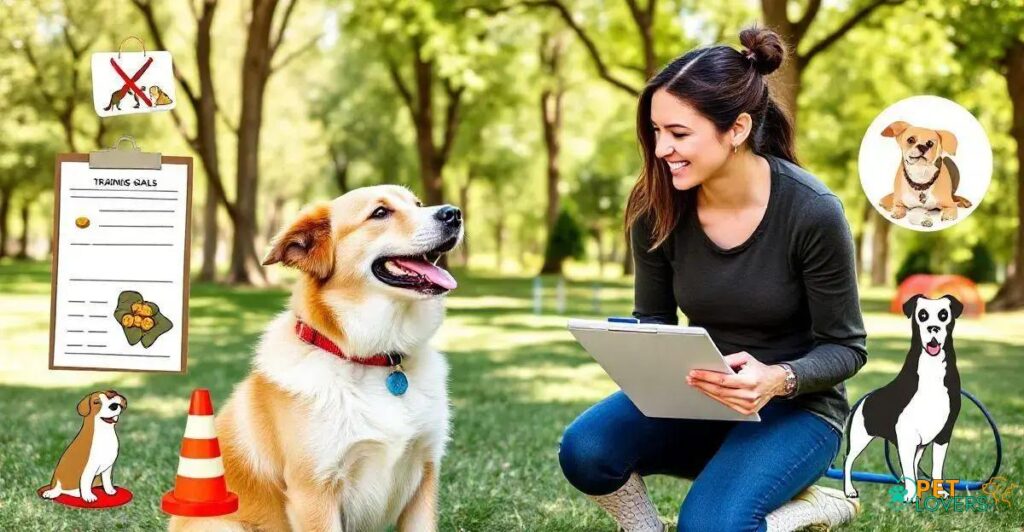Understanding your dog’s behavior and learning style is crucial for effective training. By observing their body language, energy levels, and reactions to various stimuli, you can develop a personalized training plan that caters to their unique needs, ultimately leading to a well-behaved and loyal companion.
Are you struggling to train your dog? Do you wish you could have a well-behaved and obedient pet? You’re not alone! Training a dog requires patience, consistency, and the right approach.
In this article, we’ll explore the top tips and techniques for how to train your dog, regardless of breed or age. From understanding canine behavior and learning styles to advanced techniques for obedience and agility, we’ll cover it all.
So, let’s get started and unlock the potential of your furry friend!
Understanding Canine Behavior and Learning Styles
To train your dog effectively, it’s essential to understand canine behavior and learning styles. Dogs are creatures of habit and thrive on routine, which means they respond well to consistent training methods.
By recognizing and catering to their unique learning styles, you can tailor your training approach to suit your dog’s individual needs. For example, some dogs may respond better to positive reinforcement, while others may require more structured training.
By taking the time to understand your dog’s behavior and learning style, you can build a stronger bond and create a more effective training program.
Setting Clear Goals and Rewards
Setting clear goals and rewards is a crucial step in dog training. Without a clear understanding of what you want to achieve, it’s easy to become frustrated and discouraged.
By setting specific, measurable, and achievable goals, you can create a roadmap for your training program. Additionally, using rewards and positive reinforcement can help motivate your dog and encourage them to learn.
Choose rewards that are meaningful and relevant to your dog, such as treats or praise, and be consistent in their delivery. This will help your dog associate the behavior with the reward and make the learning process more enjoyable.
Establishing a Training Schedule and Routine
Establishing a training schedule and routine is essential for successful dog training. A consistent routine helps your dog understand what is expected of them and when, allowing them to adjust their behavior accordingly.
Start by setting specific training sessions for each day, and stick to them. This will help your dog learn to focus and pay attention during training.
Additionally, consider the timing of your training sessions. Some dogs may be more receptive to training in the morning or evening, when they are more relaxed and focused.
By establishing a routine and sticking to it, you can create a positive and productive training environment for your dog.
Common Mistakes to Avoid During Dog Training
Common mistakes to avoid during dog training include being too lenient or too harsh, using punishment-based training methods, and not providing adequate socialization.
Consistency is key when training a dog, so it’s essential to establish clear boundaries and stick to them.
Additionally, avoid pushing your dog too hard, as this can lead to frustration and burnout.
Instead, focus on positive reinforcement techniques and reward good behavior.
It’s also important to recognize that every dog is different and may require a unique approach to training.
By being patient, understanding, and flexible, you can help your dog become a well-behaved and loyal companion.
Advanced Techniques for Obedience and Agility
Advanced techniques for obedience and agility training include agility training, flyball, and freestyle dog sports. These activities challenge your dog physically and mentally, while also strengthening your bond and providing mental stimulation.
Agility training, for example, involves navigating obstacles such as tunnels, jumps, and weave poles, while flyball involves catching balls. Freestyle dog sports involve performing choreographed routines with your dog.
These activities require focus, communication, and trust between you and your dog, making them an excellent way to strengthen your bond and improve your dog’s obedience.
With patience, consistency, and positive reinforcement, you can help your dog develop the skills and confidence needed to excel in these activities.
Conclusion: Unlocking the Potential of Dog Training
We’ve explored the importance of understanding canine behavior and learning styles, setting clear goals and rewards, establishing a training schedule and routine, common mistakes to avoid during dog training, and advanced techniques for obedience and agility.
By incorporating these strategies into your training program, you can help your dog become a well-behaved and loyal companion.
Remember to be patient, consistent, and positive, and to provide adequate socialization and mental stimulation for your dog.
With time and effort, you can unlock the potential of dog training and enjoy a strong and loving bond with your furry friend.
Frequently Asked Questions about Dog Training
How can I understand my dog’s behavior and learning style?
Understanding your dog’s behavior and learning style is crucial for effective training. You can observe your dog’s body language, energy levels, and responsiveness to different stimuli to better understand their needs and preferences.
What are some common mistakes to avoid during dog training?
Common mistakes to avoid during dog training include being too lenient or too harsh, using punishment-based training methods, and not providing adequate socialization and mental stimulation.
How can I establish a training schedule and routine?
Establishing a training schedule and routine is essential for consistent and effective training. Set specific training sessions for each day, and stick to them. Consistency is key when training a dog.
What are some advanced techniques for obedience and agility training?
Advanced techniques for obedience and agility training include agility training, flyball, and freestyle dog sports. These activities challenge your dog physically and mentally, while also strengthening your bond and providing mental stimulation.
How can I provide adequate socialization and mental stimulation for my dog?
Providing adequate socialization and mental stimulation for your dog is crucial for their overall well-being and training. You can do this by taking your dog on walks, playing with them, and providing puzzle toys and treats.
What are some common rewards and motivators for dog training?
Common rewards and motivators for dog training include treats, praise, and playtime. Use positive reinforcement techniques to encourage good behavior and build trust with your dog.

